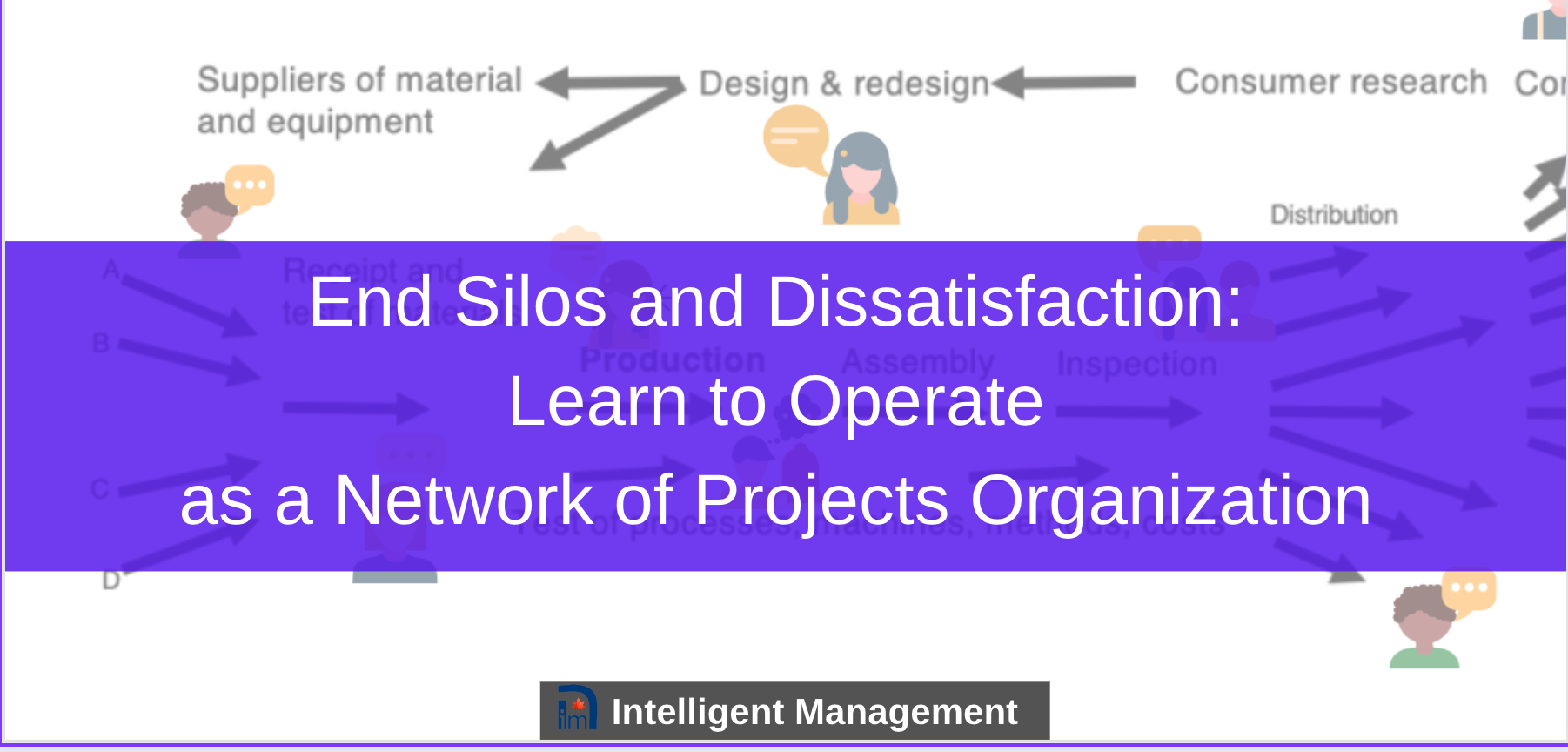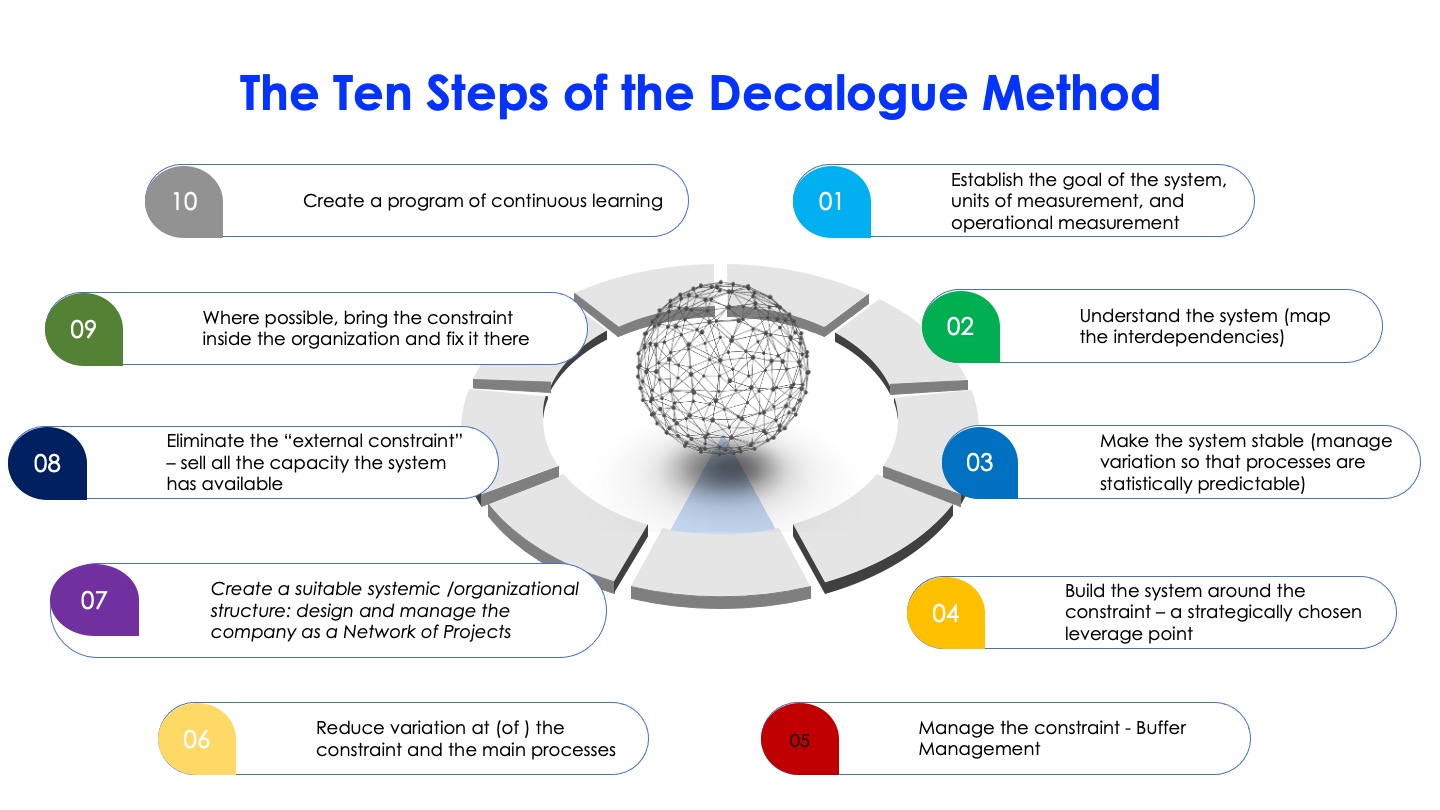
Physicists are educated to ask fundamental questions to understand the nature of things and to understand them in terms of energy and speed. What has that got to do with management, you may wonder? A great deal. An organization is a complex system where different forms of energy interdepend: human energy, mechanical energy, electrical and digital to name a few. When these energies are not directed effectively towards achieving a precise goal, the energy dissipates. It may even lead to chaos. Speed is critical because everything we do as an organization must be achieved within given timeframes. If not, customers are dissatisfied, bills don’t get paid and profits are not generated.
Two of the greatest management thinkers were physicists, Dr. W. Edwards Deming and Dr. Eliyahu Goldratt. Our founder was also a physicist who had the intuition that if the work of Deming and Goldratt was combined, companies could adopt a reliable method to radically improve performance, increase throughput and accelerate the speed of flow of materials, money and information. In the best scientific tradition, this method was then applied through dozens of implementations in increasingly complex environments and continuously refined over the years. It is ten-step process so we called it ‘The Decalogue’.
An organization is a system
The Decalogue rests on a fundamental, systemic understanding of organizations:
– Every organization is a system, a set of interdependent resources, processes and competencies that work together to achieve a common goal
– Every process is affected by variation
– Every system has a constraint – the element that dictates the pace with which the entire system produces throughput
These are the foundational elements of knowledge that allow companies to interpret their activities and the wider context that they are part of – a network of networks – so they can radically improve performance, always have the customer clearly in focus and continuously innovate.
Discovering the real obstacle to transformation
After several years of working alongside top management teams it became evident that a major obstacle to true transformation was the hierarchical/functional organization design that the majority of organizations are encased in.
So we had to step back and ask the right questions to solve the problem paradigmatically and practically. To help us with this challenge, we used a systemic thinking process from the Theory of Constraints for framing a problem and finding a breakthrough solution. The ‘conflict cloud’ works so well because it provides a structured way of eliciting the assumptions, or mental models, that lead to a situation of blockage. It is only by challenging these mental models that we can clear the way for a real breakthrough. Without this upstream rigour, a solution risks being half-baked. More fundamentally, this process is essential because if we do not address the cognitive limitations of a situation, even the best solution will eventually fail.
Following this pattern of thinking, what became clear to us at Intelligent Management over ten years ago was that complexity, i.e., a reality that is highly interconnected and interdependent, is forcing organizations to experience an inherent conflict: adopt a traditional hierarchical/functional structure with its resulting silos, or abandon the hierarchical/functional model. Companies have seen the traditional structure as a way of protecting a legitimate need for accountability and control over the organization, whereas abandoning it would fulfill another equally legitimate need all companies must address: increase performance through sales. A goal common to both needs is the sustainability of the organization. We can verbalize the major assumptions/mental models that underpin this conflict as:
- A hierarchy can only be vertical
- Control has to be exercised equally over all components of the organization
- The global optimum is equal to the sum of the local optima
These assumptions are all the outcome of a mechanistic mindset. They keep companies trapped in traditional functional/hierarchical models that create silos with all the related undesirable effects and frustrations (no visibility of interactions/flow/customer, internal competition and fear, Internal bureaucracy, Inefficient use of resources etc.)
Understanding what an organization really is and does
At Intelligent Management we continued to ask fundamental questions to further develop the solution for managing complexity and shifting organizations beyond the trap of mechanistic thinking and silos. By addressing the inherent conflict that the majority of companies are in, surfacing the mental models and addressing the most crippling assumptions, we realized that the way out of this conflict is to acknowledge that an organization is:
(a) a network (of value)
(b) part of a larger network (of value)
Now we had to articulate this realization into an operational solution that would allow companies to focus on what they truly seek: to achieve an increase and acceleration of Throughput: the pace at which the organization generates cash through sales. For non-profit organizations, throughput can be defined as the pace at which the organization generates units of its goal.
Throughput is the natural focus of any company but it is kept hidden from view in traditionally managed structures. Indeed, they do not even have a measurement for it. IBITDA, EPS, EVA and similar measurements aim at capturing cash but fail in doing so because they are all marred by the idea of product cost that clouds the real issue – cash generation. Product cost is a Zombie idea, something that is dead but every now and then comes back to haunt us.
Once it is clear that the focus has to be throughput, then the attention shifts to:
Quality of products and services
Flow of material, information and cash
Involvement of people: commitment to the goal generated by personal and professional alignment with the goal/ value system of the organization
That sounds all well and good, the question always remains, how, in a practical and operational way, do you achieve it?
Managing an organization as a network – finding an operational solution
We had to dig deeper and ask some more fundamental questions to find a way to forgo a command and control management style but, at the same time, have a powerful mechanism to ensure that activities are properly coordinated and everybody in the network is accountable.
That led us to look at the fundamental elements that make up the work of an organization. Just as the key constituents of life are hydrogen, oxygen, carbon, nitrogen, phosphorus, and sulfur, we realized that the basic constituents of work are repetitive processes and one-off projects. At this point, a new organizational design emerged, based on the management of a complex, strongly interconnected and synchronized Network of (processes and) Projects.
What propels the performance of such a network are low variation processes and a finite capacity-based algorithm, Critical Chain from the Theory of Constraints, that allows a realistic allocation of available resources from an available pool of competencies. This requires a complete shift from a “hierarchical/functional” mindset to a systemic one to overcome the command and control management style in favor of whole system optimization.
Designing and managing organizations as Networks of Projects equips them structurally, operationally, and cognitively to optimize their interactions with larger networks of value through digital and decentralized transactions. This has become even more relevant with the amount of work that is now being done online as a result of COVID-19.
A network is not just a buzzword. It is a set of “nodes” connected by “links”; it is not a static entity, indeed it is something that continuously evolves, and its sustainable development is governed by a dynamic dictated by the emergence of a few hubs strongly connected to nodes through links whose behavior is statistically predictable. This dynamic is, especially in the specific case of human networks, nonlinear because of the intrinsic nonlinearity of the interactions between the nodes (people or groups of people).
At the most fundamental level, organizations are networks of different communities of practices; it seems only reasonable that the prevailing, silo-based, hierarchical/functional organizational design be replaced with an organic way of structuring such practices. First, in Sechel: Logic, Language and Tools to Manage Any Organization as a Network (Intelligent Management Inc., 2011), followed by our chapter for Springer, “Managing Complexity in Organizations Through a Systemic Network of Projects” (2015) and then more comprehensively in Quality, Involvement, Flow: The Systemic Organization (CRC Press, 2016) and recently in ‘Moving the Chains’ (BEP, 2019) Intelligent Management presented a new model for the sustainable growth of organizations based on the concept of a Network of Projects. A Network of Projects leverages the power of the Critical Chain algorithm developed by Dr. Goldratt to build organizational systems where control mechanisms, feedback cycles, and rational allocation of finite resources are more effective and in line with the goals of the organization.
Everything that an organization does can be thought of in terms of a project. Some projects, like bookkeeping, are repetitive, and others, like developing a new product, introducing a new technology, or launching a new marketing campaign, are non-repetitive. These projects do not live in isolation, they are a network. The Network of Projects that makes up the life of the organization is a particular kind of Network, called oriented network, where the “orientation” is provided by the goal of the organization. Such networks are called scale free, with a hierarchy of hubs and nodes. Accordingly, in an organization, there will be hub-projects, namely the ones more relevant for the success of the organization, and “node-projects,” projects that are smaller but still necessary for the development of the organizational network. What ensures the connection among these Hub and Node Projects is the finite capacity algorithm for their synchronization, fueled by an appropriate Database of resources. Within the 10 steps of the Decalogue for managing organizations as systems, based on managing variation and constraints, Step 7 regarding organizational design becomes the design of a Network of Projects.
There are some companies that provide software to track and map the networks that already exist within traditional organizations. That it is nice but it is far from sufficient. You have to have a way of orienting those networks towards the goal operationally.
A Network of Projects leverages the power of the Critical Chain algorithm developed by Dr. Goldratt to build organizations as systems where control mechanisms, feedback cycles, and rational allocation of finite resources are more effective and in line with the goals of the organization.
Try it for yourself
Can you categorize the activities your company carries out as either repetitive processes or one-off projects? Are you managing those processes and projects so they deliver on time and within budget? Do you have a way of tackling the Quality of what you deliver, the involvement of your people and the speed of flow of throughput so they are completely interconnected? Is it easy to see that there is a “control mechanism” for governing all the activities going on?
See Part 13 of this series: Company Functions Are Limiting Your Organization’s Performance

PREVIOUS POSTS IN THIS SERIES:
Radically Improving Organizational Performance – A Systemic Approach to Management Part 1
Leadership for Complex Times – A Systemic Approach to Management Part 5
Working with Variation to Support Good Decision Making – A Systemic Approach Part 7
Why Your Organization’s Constraints Are the Key to Success – A Systemic Approach Part 8
Improving Flow Company Wide – A Systemic Approach Part 9
Controlling the Whole Organization through the Constraint – A Systemic Approach Part 10






Leave a Reply